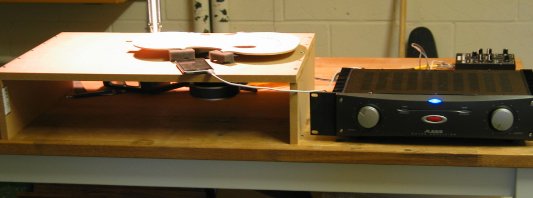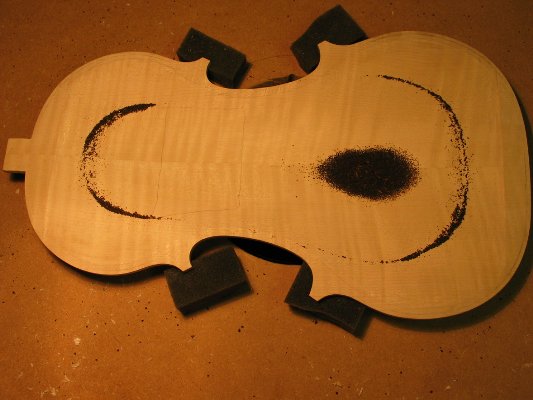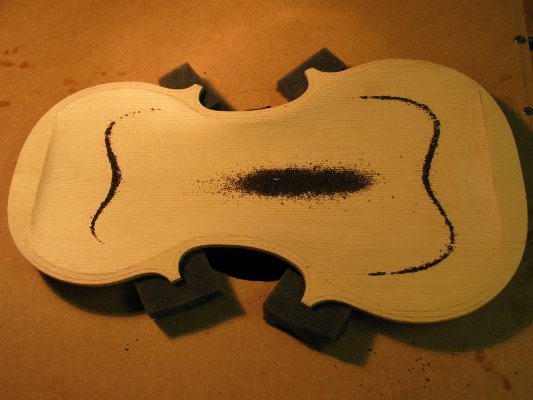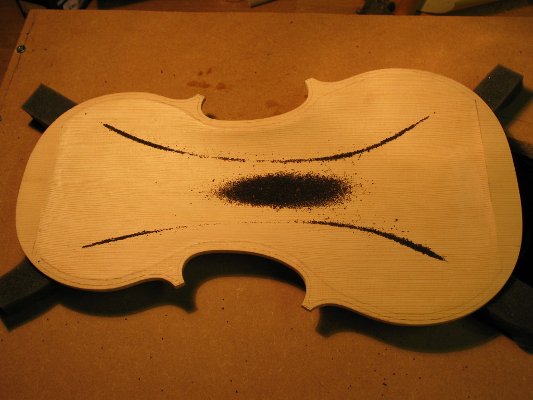We are now ready to tune the top and back plates of “The Rebecca”. My method of plate tuning is based upon the work of Carleen Hutchins. Carleen spent a lifetime researching the relationships between the various resonant frequencies of free-standing violin plates and the tone of the resulting violin.
I look primarily at two modes of vibration for the free-standing plates. The first is F5 or the ring mode. The second is F2 or the x-mode. These two frequencies are directly related to the flexural stiffness of the plates. Contrary to Carleen’s recommendation, I don’t tune the plates to a specific frequency but rather try to tune to a specific flexural stiffness. This is demonstrated below.
The set-up I use for vibrating the plates is shown in the image below. On the left is a speaker mounted on a platform which holds the violin plate (note it is rested on foam blocks). As a signal source I use an ipod with a signal generation app. To boost the signal to a high enough level to drive the speaker, I pass the signal from the ipod into a pre-amp (just a di box) and then into a power amplifier. I sweep the signal generator until the resonant frequency for the plate is reached at which point the tea leaves dance around and line up along the node lines.
Below are two images for the back plate. The first is F5 and the second is F2. Notice how the nodes lines are not very clean especially for F2 in the upper bouts. This tells me I need to remove some more wood. The shape of the node lines gives me some idea of where to remove wood. Also this plate is a little heavy and stiff. I use the resonant frequencies of the two modes (in this case 370 Hz and 166 Hz) and the weight of the plate to calculate stiffness. Finally, the other thing I look for is the range of frequencies at which the tea leaves vibrate. For this plate at this point the range is about 10 Hz. When I reach the optimum graduation that range will be more like 3 Hz.
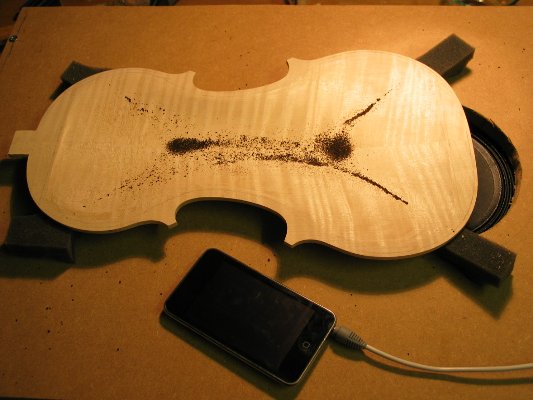
The next two images are the final results for the top. Notice the nice clean nodal lines. The difference in shape of the ring mode is due to the different graduation pattern used for the top and back. The back is significantly thicker in the middle than in the lungs. This causes the back to act like an air pump and results in the rounder shape of the ring mode. The top is more uniform in thickness and hence the dipping in the middle of the nodal lines for the ring mode.
With the plates tuned, we are ready to cut the f-holes in the top and put in the bassbar. I will use the tuning setup one more time to tune the shaping of the bassbar.

